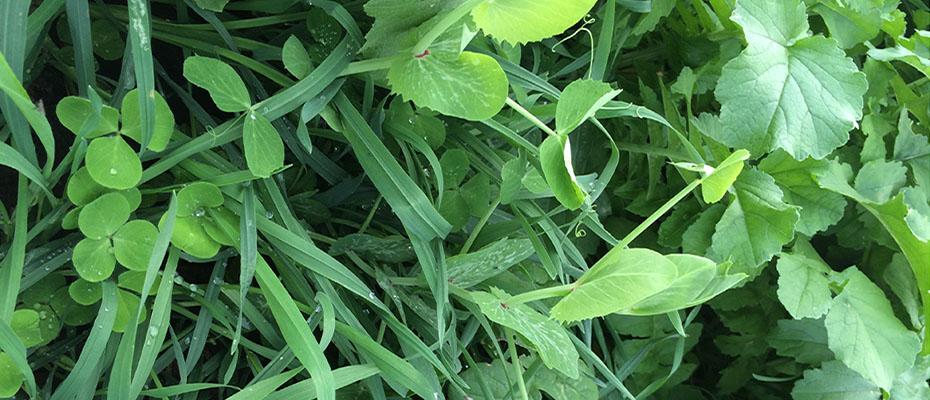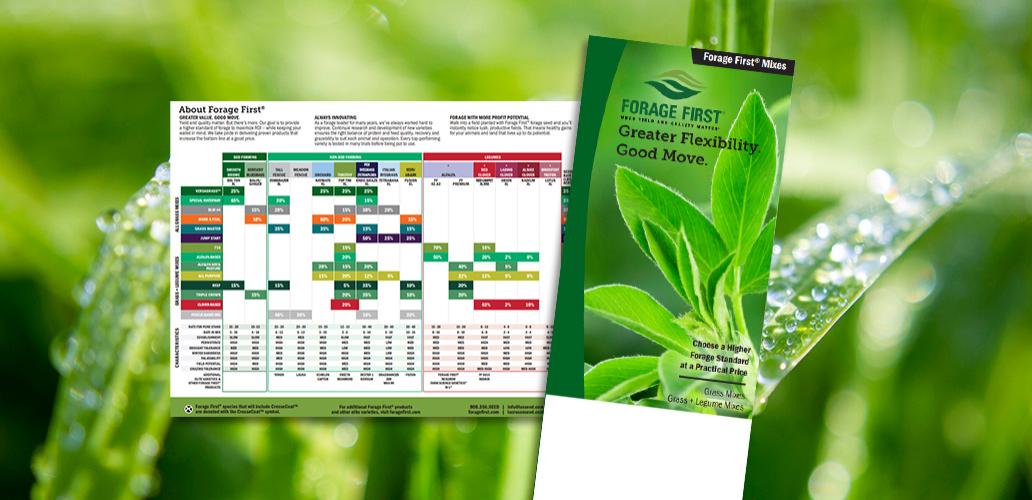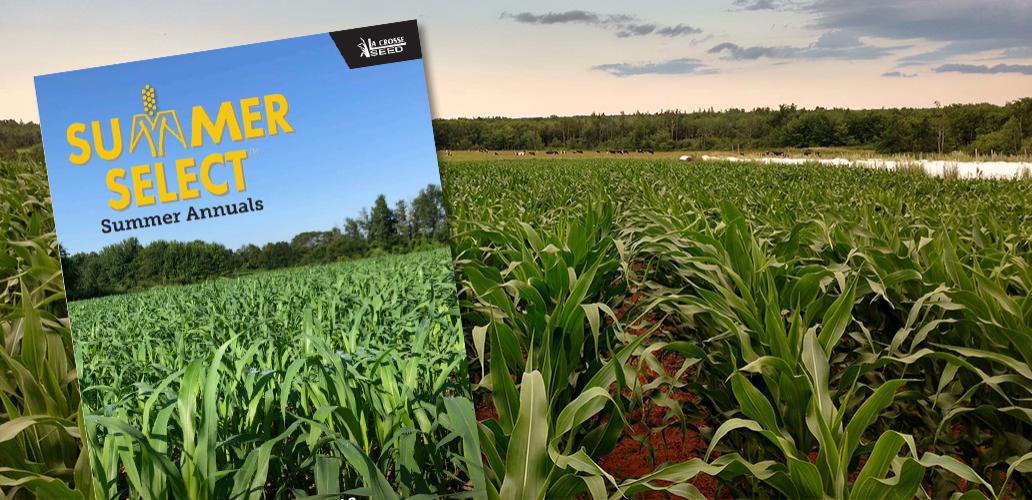Forage First Guide I Summer Select Guide
Greater Value. Good Move. Yield and quality matter. But there’s more. Our goal is to provide a higher standard for forage to maximize ROI– while keeping your wallet in mind. We take pride in delivering proven products that increase the bottom line at a good price.

50% Nitrouse Winter Triticale
38% Winter Peas
6% Tillage Radish
6% Forage Brassica
Soil First® 140 Multi-Purpose cover crop mix is formulated with the livestock grazer in mind, providing soil protection and biomass from fall through spring.
Characteristics:
Non-Forage Benefits:
1 = Poor; 5 = Excellent
Compaction Alleviation: 4
Weed Suppression: 5
Biomass Production: 5
Erosion Control: 3
Disease/Pest Control: 3
Pollinator/Beneficials: 2
P & K Cycling: 3
Ease of Establishment: 5
Nitrogen Fixer/Scavenger: Both
Nutritional Value:
Values Vary Greatly Depending on Maturity
Crude Protein: 11-14
DM Tons/Acre: 3-5
Days to First Harvest: 45-50
Days to Next Harvest: 25
Ranking (Good, Better, Best):
Graze: Best
Baleage: Good
Chop: Better
Seeding:
Planting Time:
July-Sept.
Seeding Rate:
Mono (lbs./acre): 35-40
Forage (lbs./acre): 40-50
Seeding Info:
Seeding Depth (in./with drill): 1/4-1
Germination Soil Temp.: 45 F
Bulk Density (lbs./ft.³): 50
Aerial Application Rate: Not Rated
Management:
Best Use:
Designed for maximizing biomass on open opportunity ground late summer and/or early fall; can be utilized prior to any cash crop when taken off as forage.
Termination:
Triticale can be controlled with traditional glyphosate rates prior to 12-18 in. growth. 2 ft. tall triticale should be controlled with roller or crimper. If mowing, wait until triticale begins to flower. Radish will terminate with multiple nights in the teens. If radish survive, glyphosate and 2,4-D offer an effective control method. Forage brassicas will typically winterkill with temperatures below 25 F and collards are winderhardy to -15 F. Forage brassica can be controlled with glyphosate and 2,4-D, however collards require other broadleaf herbicides, if not grazed out completely.

- Fits into several systems – after silage or small grain harvest
- Good option to seed on acres where leftover nutrients exist
- Formulated ideally for maximizing forage through multiple grazing cycles
- Great option after silage or small grain harvest (or acres where leftover nutrients exist)

.png)
.png)


.png)











